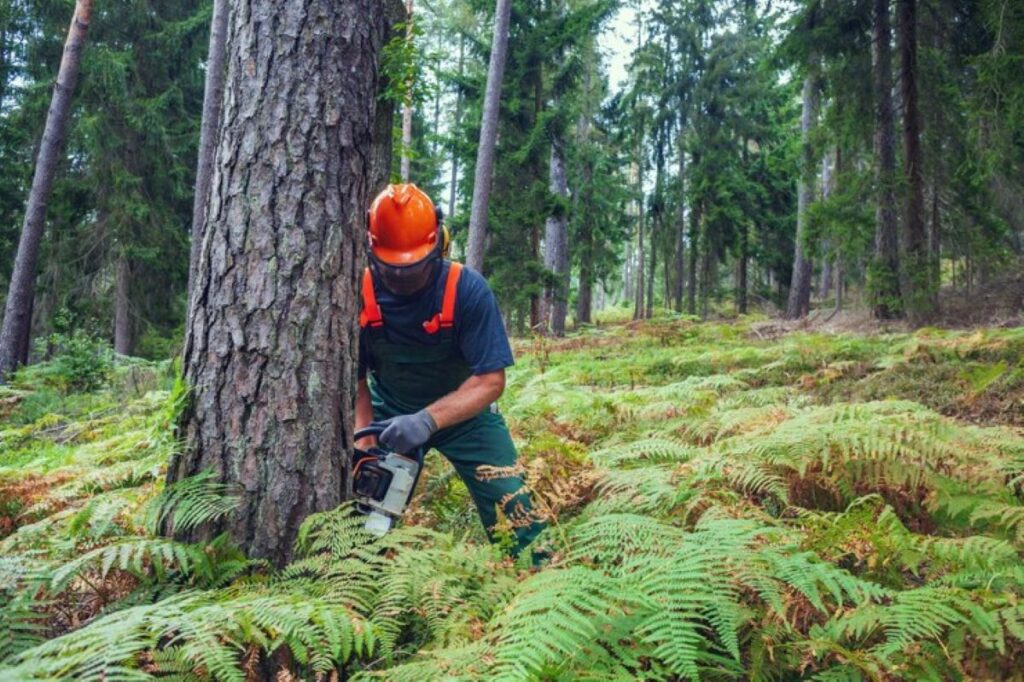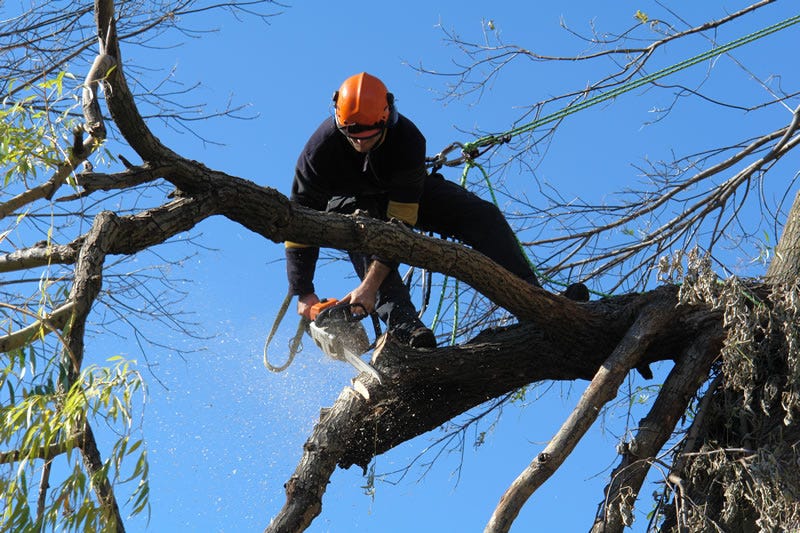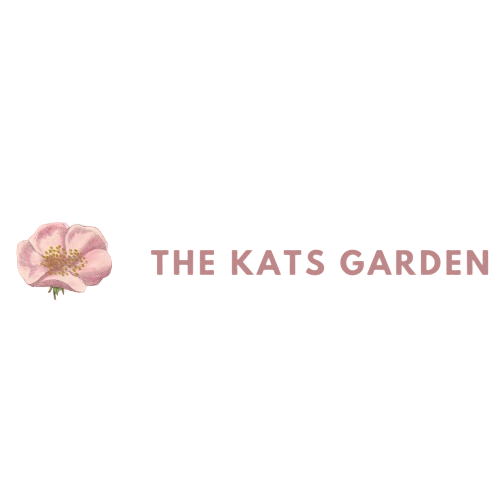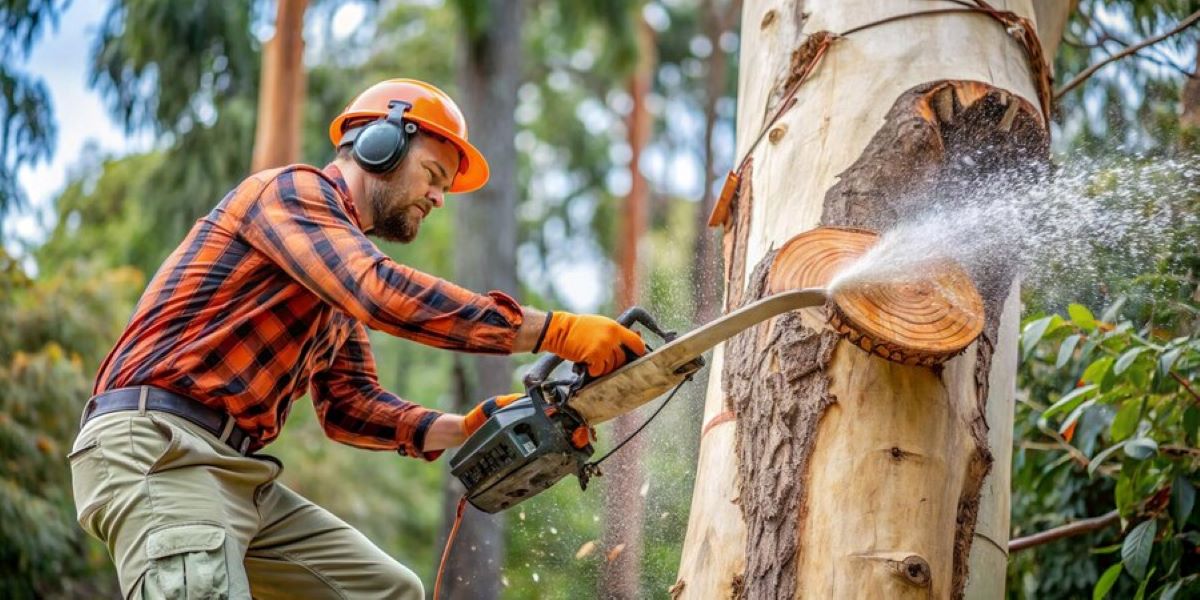Residential tree removal is an important part of property maintenance and safety management in Sydney’s urban area. This specialised service involves carefully removing trees from residential properties when certain circumstances require their removal.
The decision to remove a tree from a residential property has significant effects on:
- Property safety and structural integrity
- Neighbourhood appearance
- Local ecosystem balance
- Compliance with council regulations
Professional tree removal services are crucial in carrying out these operations safely and legally. Licensed arborists evaluate each situation thoroughly, taking into account factors such as tree health, potential risks, and environmental impact. These experts navigate complex regulatory requirements, including council permits and local government guidelines, ensuring all removals comply with Sydney’s strict environmental protection standards.
Knowing when tree removal is necessary helps property owners make informed decisions about managing their landscape while following local regulations and fulfilling their environmental responsibilities.
Understanding Residential Tree Removal Services
Residential tree removal involves a wide range of specialised services aimed at safely removing trees from private properties. These services include:
- Pre-removal Assessment: Professional evaluation of the tree’s condition, surrounding structures, and potential risks
- Site Preparation: Protection of surrounding landscape features and property
- Strategic Planning: Development of safe removal methods specific to the tree’s location and size
- Equipment Deployment: Use of specialised machinery and tools for precise cutting and removal
- Complete Clean-up: Thorough removal of debris and restoration of the affected area
The Role of Licensed Arborists
Licensed arborists play a crucial role in residential tree removal projects by bringing their expertise in:
- Advanced technical knowledge of tree biology and structural mechanics
- Proper handling of complex removal scenarios near buildings or power lines
- Implementation of safety protocols to protect property and personnel
- Understanding of local regulations and permit requirements
- Access to professional-grade equipment and removal techniques
The involvement of certified tree specialists ensures adherence to Australian Standards for tree work (AS 4373-2007). These professionals maintain current insurance coverage, including public liability protection up to $20M, providing property owners with peace of mind during removal operations.
Qualified arborists also conduct thorough site inspections to identify potential hazards and develop appropriate removal strategies. For homeowners seeking more information on this topic, resources such as Branching Out Cairns provide valuable insights. This is particularly important in Sydney’s diverse urban landscape where space constraints and property protection require careful consideration.
When Is Residential Tree Removal Necessary?
Specific circumstances necessitate the removal of trees from residential properties. Understanding these situations helps property owners make informed decisions about their landscape management.
1. Disease and Death
Trees affected by disease present significant risks to both property and surrounding vegetation. Signs of tree illness include:
- Discoloured or dropping leaves outside seasonal changes
- Fungal growth on trunk or branches
- Bark splitting or peeling
- Dead branches throughout the crown
- Root decay or visible root damage
Prompt removal of diseased trees prevents the spread of pathogens to healthy vegetation and eliminates potential structural failures.
2. Safety Hazards
Trees can become hazardous due to various factors:
- Severe lean towards structures
- Exposed or damaged root systems
- Cracked or split trunks
- Interference with power lines
- Branches extending over roofs or walkways
These conditions create immediate risks to buildings, utility infrastructure, and human safety, requiring swift professional intervention.
3. Construction Impact
Building projects and infrastructure developments often necessitate tree removal:
- Site preparation for new structures
- Installation of underground utilities
- Driveway or parking area expansion
- Foundation protection from root systems
- Grade changes affecting tree stability
4. Property Development Requirements
Approved development projects might require tree removal for:
- Building extensions or renovations
- Swimming pool installations
- Landscape redesign
- Access road construction
- Compliance with local planning regulations
Each situation demands careful assessment by qualified arborists to determine the most appropriate course of action. Professional evaluation considers factors such as tree species, health condition, structural integrity, and potential impact on surrounding properties.
Licensed tree specialists utilise specialised equipment and techniques to safely remove trees while protecting nearby structures and vegetation. This expertise ensures minimal disruption to the property and adherence to local council regulations.
For instance, municipalities often have guidelines in place for protecting and retaining trees during development projects. Similarly, cities like Charlotte have specific tree management manuals that outline procedures for tree removal and preservation in urban areas. In California, local ordinances such as those found in Pasadena’s Code of Ordinances may also dictate the terms under which trees can be removed or preserved during residential development.
Additional Factors Influencing Tree Removal Decisions
Tree density management plays a crucial role in maintaining healthy residential landscapes. In densely wooded lots, selective thinning creates essential space between trees, allowing:
- Improved air circulation
- Better light penetration
- Enhanced nutrient availability
- Reduced competition for water resources
Dense tree populations can lead to stunted growth and increased susceptibility to diseases. Professional arborists assess optimal spacing requirements based on species, size, and site conditions to recommend appropriate thinning strategies.
Regulatory Compliance in Sydney Areas
Local council regulations govern residential tree removal through specific requirements such as Development Application (DA) submission, compliance with Tree Preservation Orders, heritage conservation considerations, and replacement planting obligations. Sydney councils maintain strict oversight of tree removal activities to preserve urban canopy coverage. Property owners must obtain necessary permits and approvals before proceeding with any tree removal work.
HOA Guidelines and Community Standards
Homeowner Associations establish additional layers of oversight for tree removal decisions. These include architectural review committee approval, compliance with community aesthetic standards, documentation requirements, and impact assessment on neighbouring properties. These community guidelines protect property values and maintain neighbourhood character.
The intersection of density management, council regulations, and community standards creates a comprehensive framework for responsible tree removal decisions in residential settings. Understanding these aspects can significantly assist homeowners in making informed decisions about tree removal while ensuring compliance with local regulations and community standards.
Furthermore, it’s important to consider the broader implications of tree removal beyond immediate aesthetics or property value. Research indicates that trees play a vital role in our ecosystem – they improve air quality, provide habitat for wildlife, and contribute to overall biodiversity. Therefore, any decision regarding tree removal should also take into account the potential environmental impact and strive towards a balance between development needs and ecological preservation.

Why You Need Professional Arborist Services for Residential Tree Removal
When it comes to removing trees from your property, it’s essential to hire professionals who specialise in this field. Professional arborist services offer expertise and safety measures that are crucial for residential tree removal projects.
The Benefits of Hiring Certified Arborists
Certified arborists, who have achieved Level 2-5 certification, possess specialised knowledge in various areas related to tree care. Here’s what they bring to the table:
- Tree species identification: They can accurately identify different types of trees, which is important for determining the best removal approach.
- Disease diagnosis: Certified arborists can identify any diseases affecting the tree, allowing them to plan for proper disposal and prevent spread.
- Structural weakness assessment: They have the skills to assess the structural integrity of the tree and identify potential hazards.
- Risk evaluation: Arborists can evaluate the risks associated with removing a particular tree, such as damage to nearby structures or landscaping.
- Environmental impact analysis: They consider the environmental impact of tree removal and can recommend alternatives if necessary.
Thorough Assessments for Effective Removal
One of the key advantages of hiring professional arborists is their ability to conduct thorough assessments. Before proceeding with any removal work, they will:
- Assess the current health status of the tree
- Identify potential hazards that may arise during removal
- Evaluate site-specific challenges such as access issues or proximity to power lines
- Determine the most appropriate removal techniques based on their findings
- Ensure compliance with local regulations regarding tree removal
- Provide guidelines for future maintenance of the area
These assessments are critical in ensuring that the removal process is carried out safely and efficiently while minimising any negative impact on the surrounding environment.
Advanced Equipment for Challenging Situations
In addition to their expertise, professional arborists also have access to advanced equipment that enables them to handle challenging situations effectively. Some examples include:
- Precision cutting tools for accurate cuts
- Specialised rigging systems for controlled lowering of branches
- Crane-assisted removal when trees are located in difficult-to-reach areas
- Ground protection measures to prevent damage to lawns or gardens
- Safety harnesses and protective gear for workers
This state-of-the-art equipment allows certified arborists to carry out removals in locations where traditional methods may not be feasible or safe.
Protecting Property Owners with Insurance Coverage
Another important aspect of hiring professional arborist services is the protection it offers property owners. Reputable arborists carry public liability insurance coverage up to £20 million, which safeguards homeowners from any potential damages that may occur during the course of removal operations.
This insurance coverage provides peace of mind knowing that you won’t be held financially responsible if an accident were to happen on your property.
Why Choose Professional Arborist Services?
The combination of certified expertise, detailed assessments, advanced equipment, and insurance coverage makes professional arborist services indispensable for residential tree removal projects.
By choosing professionals over DIY methods or unqualified individuals, you ensure:
- Safety: Trained experts know how to handle potentially dangerous situations involving large trees.
- Efficiency: Professionals have experience working with various types of trees and can complete removals quickly without compromising quality.
- Compliance: Certified arborists understand local regulations regarding tree removals and will ensure all necessary permits are obtained.
- Environmental responsibility: Qualified professionals consider the ecological impact of their actions and strive to minimise harm whenever possible.
When it comes time for you to remove a tree from your property, remember that hiring professional arborist services is not just an option—it’s a necessity!
Legal and Environmental Considerations in Residential Tree Removal
Residential tree removal in Sydney requires strict adherence to local regulations and environmental guidelines. Each Local Government Area (LGA) maintains specific requirements for tree management and removal permits.
Permit Application Requirements:
- Detailed site plans showing tree locations
- Photographs of trees marked for removal
- Arborist reports documenting tree conditions
- Written explanation justifying removal
- Payment of applicable council fees
The permit acquisition process varies across Sydney’s LGAs, with processing times ranging from 2-8 weeks. Property owners must obtain approval before any tree removal activities commence, avoiding potential penalties.
See Also : What Does a Level 5 Arborist Sydney Do?
Environmental Impact Management
Sydney’s urban forest contributes significantly to local biodiversity. Tree replacement policies help maintain this ecological balance:
- Like-for-like species replacement requirements
- Minimum tree size specifications
- Native species preservation guidelines
- Protected species considerations
- Habitat conservation measures
Insurance Protection
Professional tree removal services must maintain comprehensive insurance coverage:
A minimum of $20 million public liability insurance protects property owners against potential damages or accidents during tree removal operations.
Additional Legal Requirements:
- Heritage conservation compliance
- Tree preservation orders
- Neighbour consultation processes
- Root system protection measures
- Waste disposal regulations
These legal and environmental considerations safeguard Sydney’s urban landscape while ensuring responsible tree management practices. Property owners working with certified arborists receive guidance through these regulatory requirements, maintaining compliance throughout the removal process.
Emergency Tree Removal Scenarios: When Urgent Intervention Is Required
Severe weather events create critical situations demanding immediate tree removal action. Storm-damaged trees can split, lean precariously, or fall onto residential structures, creating life-threatening hazards.
Common emergency scenarios include:
- Trees struck by lightning with unstable burning branches
- Split trunks from high winds threatening to collapse
- Fallen trees blocking emergency access routes
- Root-damaged trees leaning towards buildings after floods
- Large branches entangled in power lines
Professional arborists provide 24/7 emergency response services equipped with specialised gear for rapid hazard assessment and safe removal. These urgent situations bypass standard council approval processes under immediate risk provisions.
Critical response protocols involve:
- Rapid site safety assessment
- Power company coordination for electrical hazards
- Strategic removal planning to prevent additional damage
- Temporary protective measures for affected structures
- Emergency cleanup of debris
Sydney residents facing tree emergencies should contact certified arborists with proven experience in crisis response. Professional teams utilise advanced equipment and techniques to handle complex removal scenarios while prioritising safety and property protection.

Maintaining Long-Term Tree Health After Removal Decisions
Professional tree care services in Sydney employ strategic methods to protect the remaining trees after removal operations. A detailed maintenance plan ensures the health of nearby plants through specific actions:
Essential Post-Removal Care Practices:
- Regular inspection of remaining trees for signs of stress
- Soil quality assessment and enrichment as needed
- Implementation of proper irrigation schedules
- Application of mulch to retain moisture and protect roots
Pruning Benefits for Remaining Trees:
- Removal of dead or damaged branches
- Enhanced light penetration and air circulation
- Reduced risk of disease spread
- Balanced crown structure for optimal growth
Stump Grinding Advantages:
- Elimination of potential pest habitats
- Prevention of root disease transmission
- Creation of usable space for new plantings
- Improved aesthetic appeal of the property
Protective measures for surrounding vegetation include establishing root barriers, maintaining proper soil pH levels, and monitoring for signs of environmental stress. Professional arborists assess specific site conditions to develop customised care plans that address unique challenges posed by tree removal activities.
To further enhance the health and vitality of the remaining landscape, it’s essential to integrate advanced tree care techniques. This includes following some valuable spring tree care tips such as regular watering, mulching, and pruning during the spring season when trees are most receptive to care.
Additionally, implementing a robust urban forest management strategy can significantly improve the overall health of your local ecosystem. Regular maintenance schedules, combined with expert pruning practices, create optimal conditions for long-term tree health and property value enhancement.
Conclusion
Responsible tree management is essential for maintaining properties and protecting the environment. When it comes to removing a residential tree, it’s important to carefully consider various factors such as safety issues and legal obligations.
In Sydney, professional residential tree removal requires the skills of qualified arborists who:
- Follow local laws and regulations
- Use safe methods for removing trees
- Assess the health of trees thoroughly
- Assist property owners with obtaining permits
- Suggest suitable replacement strategies
By hiring certified arborists, both property value and community appearance are preserved while also maintaining a delicate balance in the ecosystem. Property owners play their part in promoting sustainable development within Sydney’s urban forest through proper tree care techniques and strategic replanting initiatives.
Taking a methodical approach towards residential tree removal, supported by expert knowledge, leads to safer homes and greener spaces for generations to come. Investing in professional tree services not only protects properties but also showcases dedication towards environmentally responsible practices.

